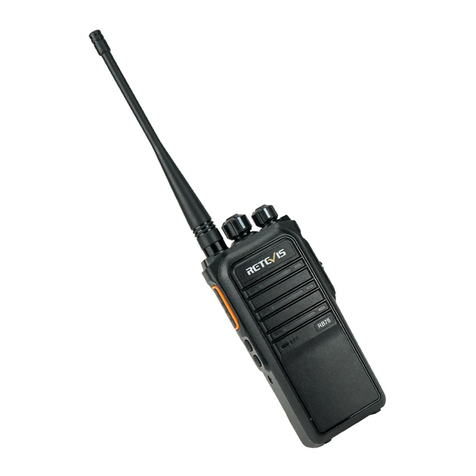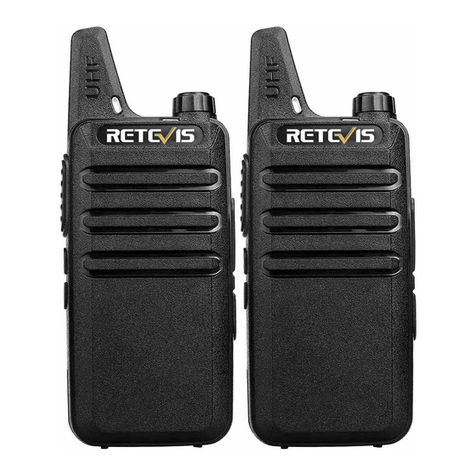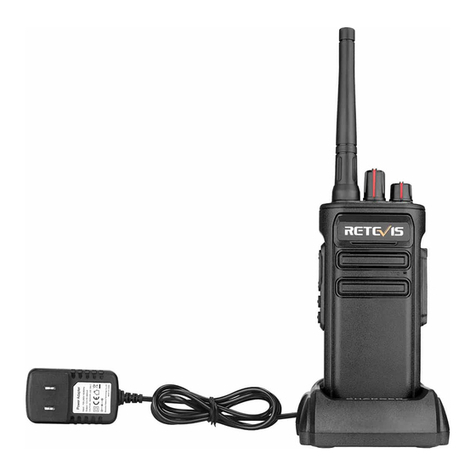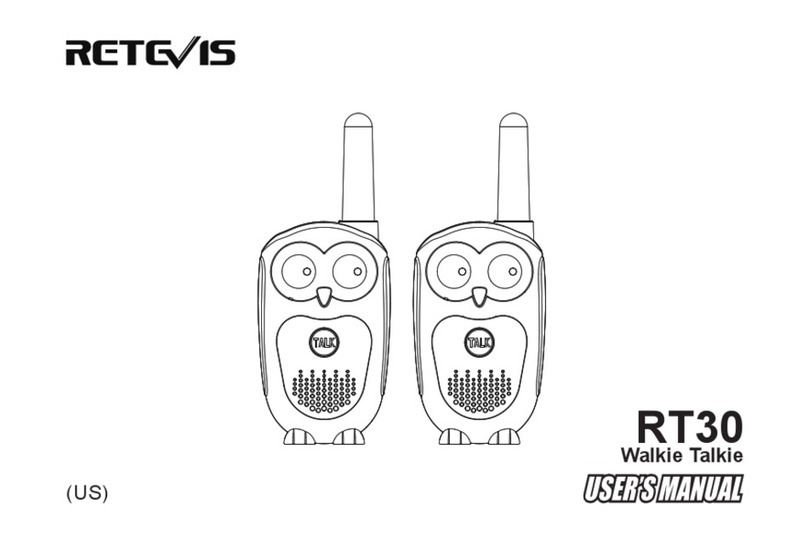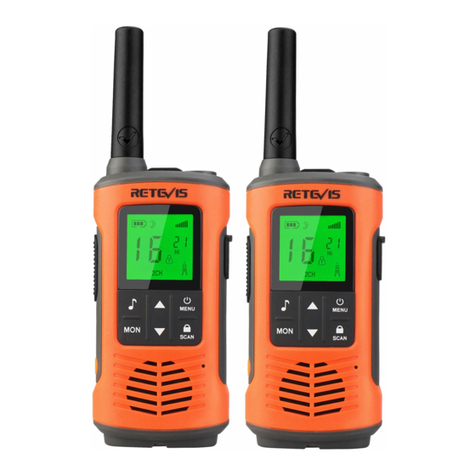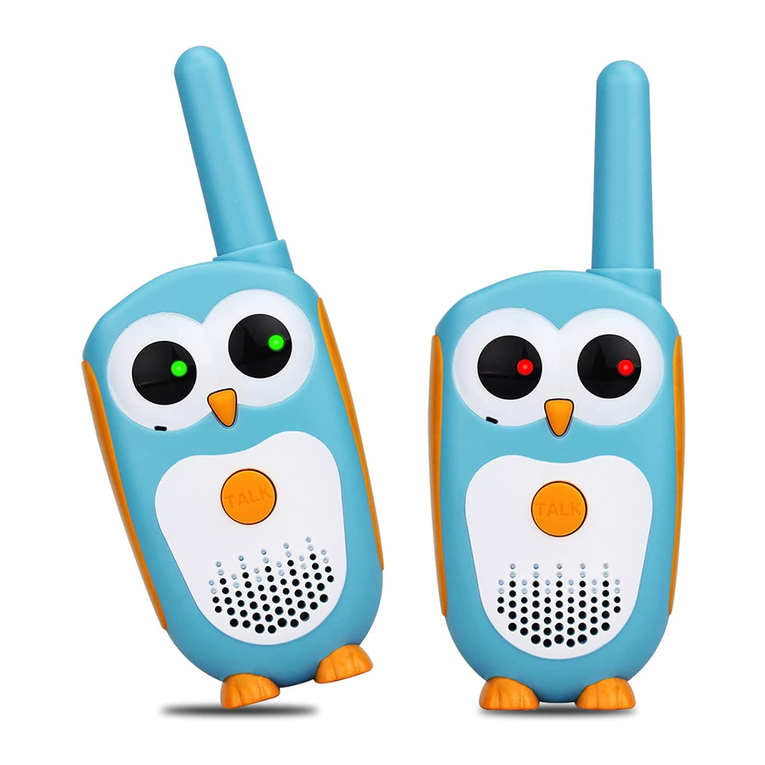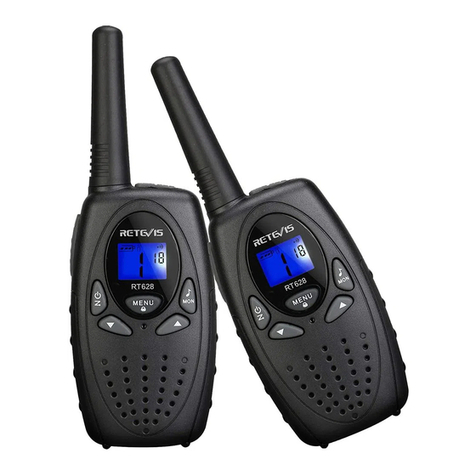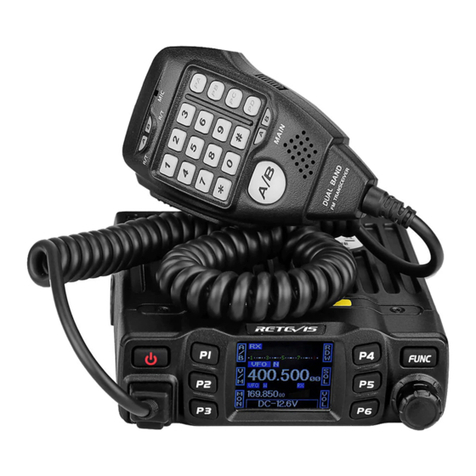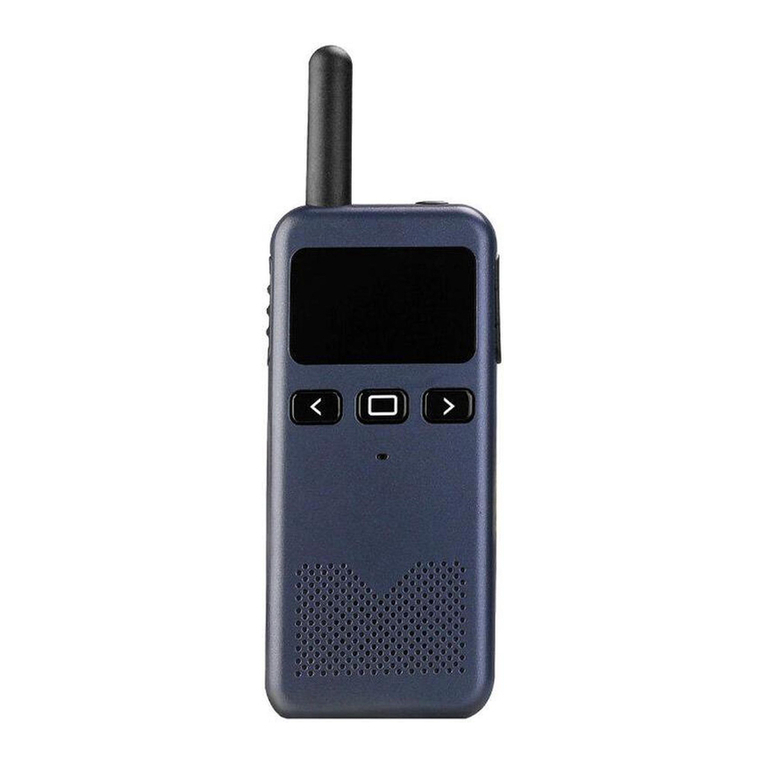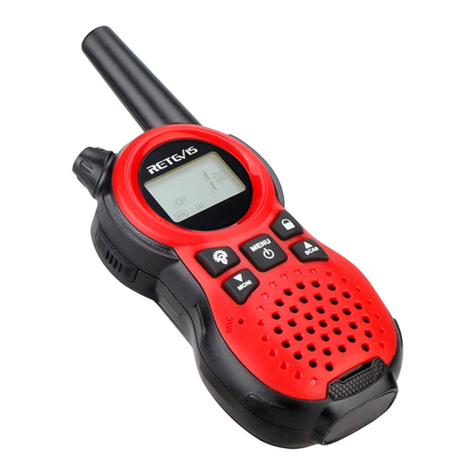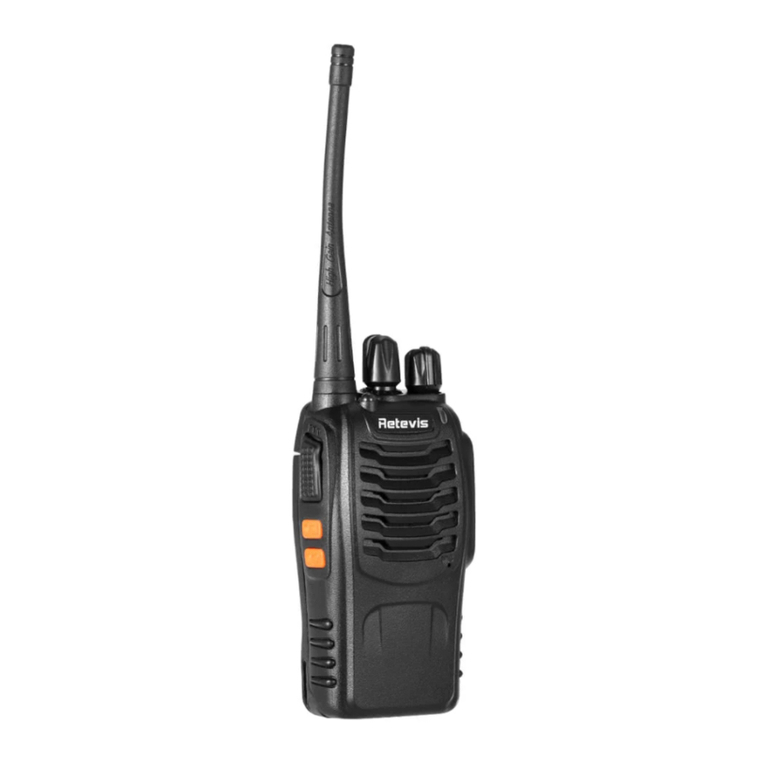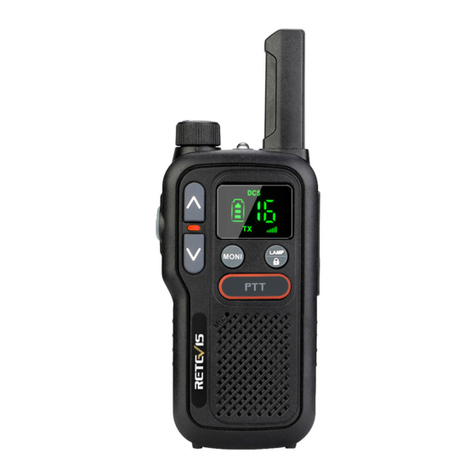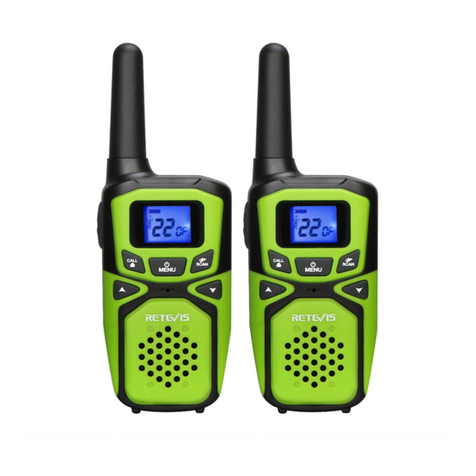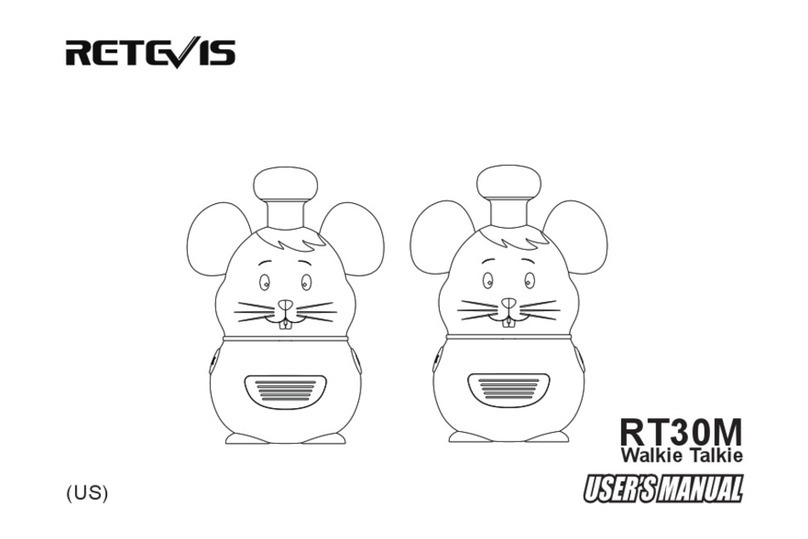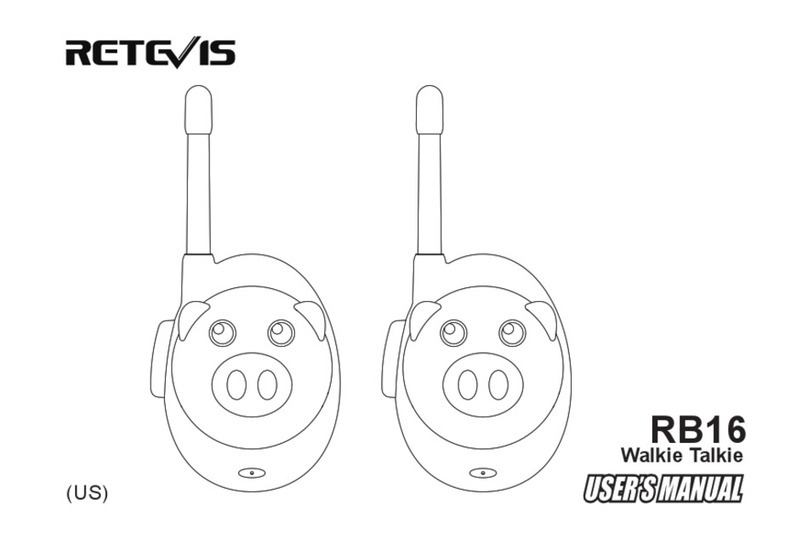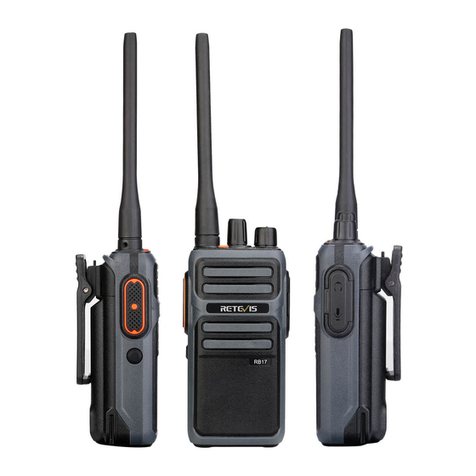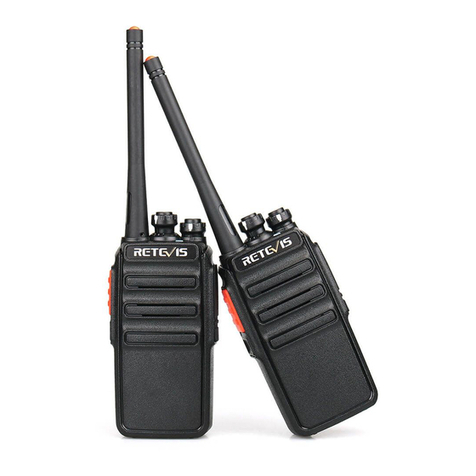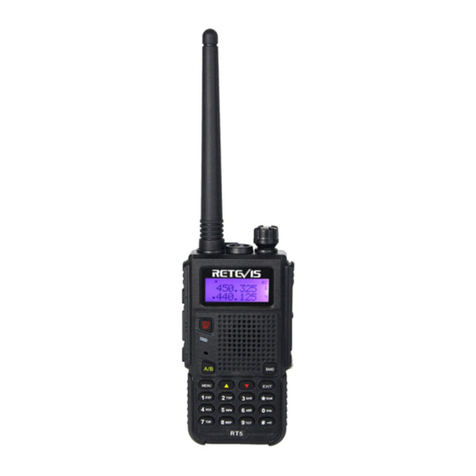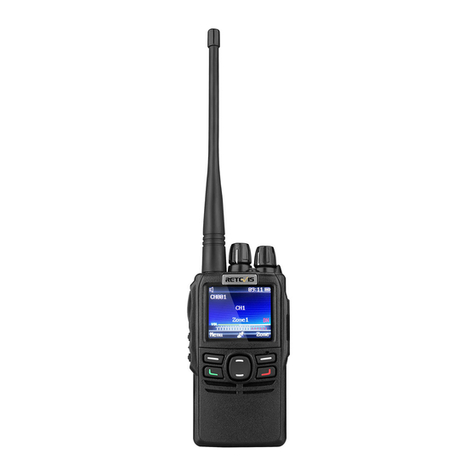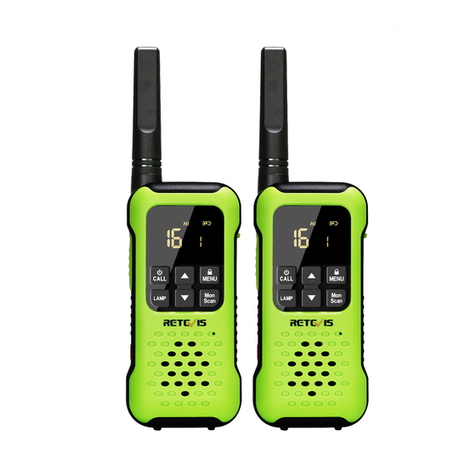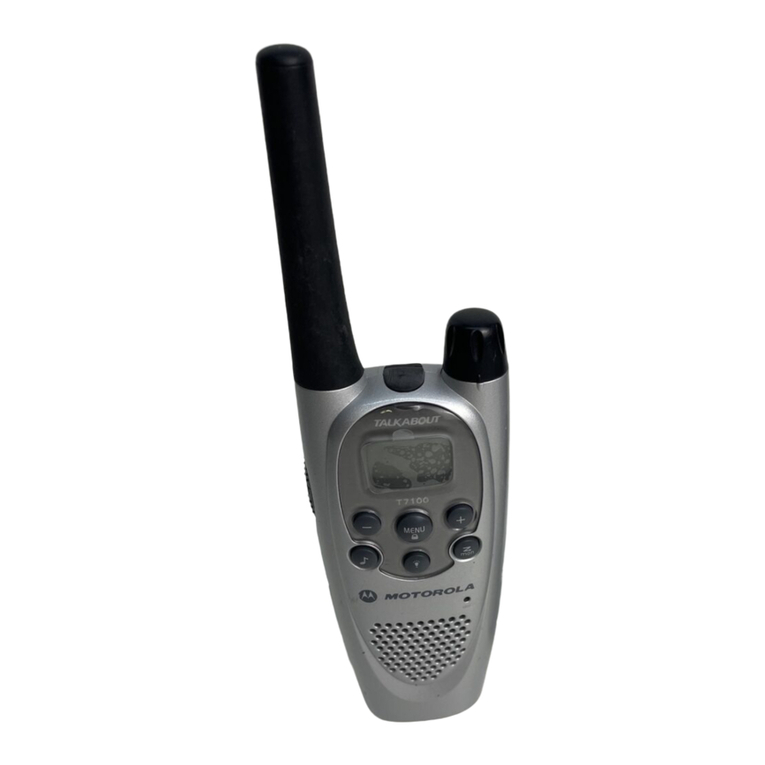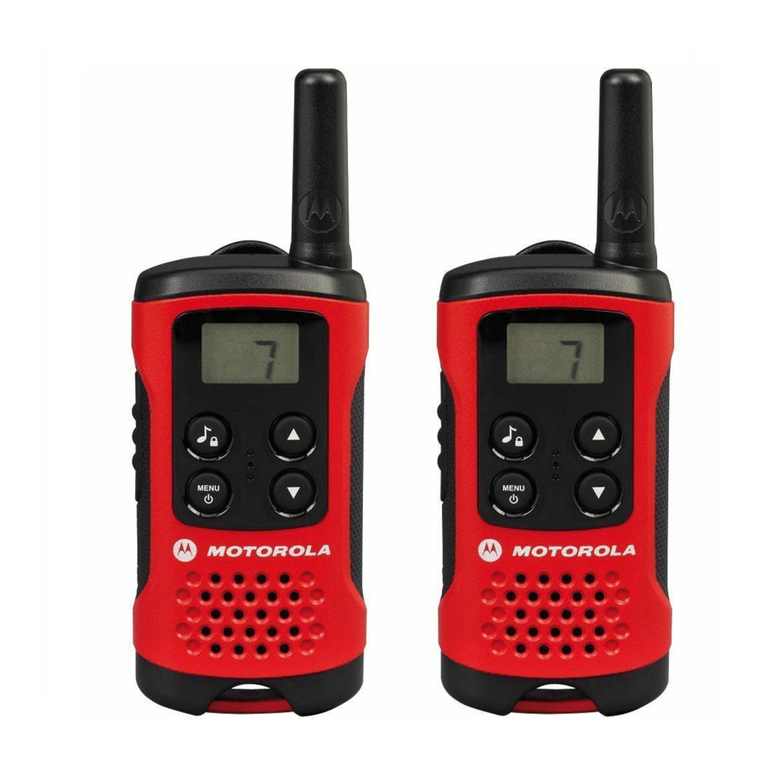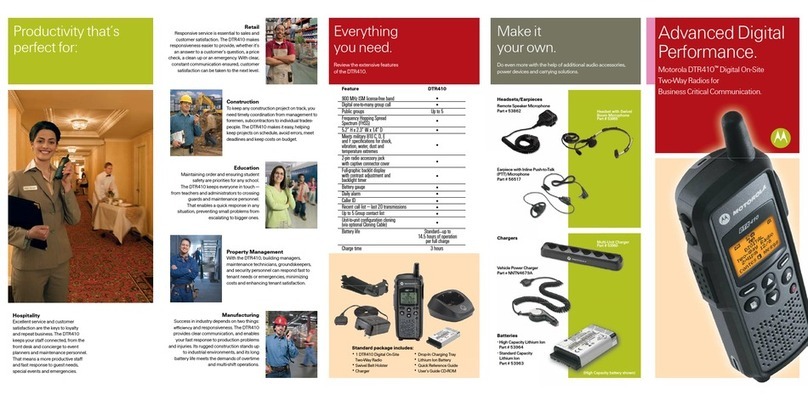
7
your two radios, please contact the local government radio management
departments.
Use of this radio outside the country where it was intended to be
distributed is subject to government regulations and may be prohibited.
Unauthorized modification and adjustment
Changes or modifications not expressly approved by the party responsi-
ble for compliance may void the user’s authority granted by the local
government radio management departments to operate this radio and
should not be made. To comply with the corresponding requirements,
transmitter adjustments should be made only by or under the supervision
of a person certified as technically qualified to perform transmitter
maintenance and repairs in the private land mobile and fixed services as
certified by an organization representative of the user of those services.
Replacement of any transmitter component (crystal, semiconductor, etc.)
not authorized by the local government radio management departments
equipment authorization for this radio could violate the rules.
FCC Requirements:
This device complies with part 15 of the FCC Rules. Operation is subject
to the condition that this device does not cause harmful interference.
(Licensed radios are applicable);
This device complies with part 15 of the FCC Rules. Operation is subject
to the following two conditions: (Other devices are applicable)
(1) This device may not cause harmful interference, and
(2) this device must accept any interference received, including
interference that may cause undesired operation.
NOTE: This equipment has been tested and found to comply with the
limits for a Class A digital device, pursuant to part 15 of the FCC Rules.
These limits are designed to provide reasonable protection against
harmful interference when the equipment is operated in a commercial
environment. This equipment generates, uses, and can radiate radio
frequency energy and, if not installed and used in accordance with the
instruction manual, may cause harmful interference to radio
communications. Operation of this equipment in a residential area is
likely to cause harmful interference in which case the user will be
required to correct the interference at his own expense.
CE Requirements:
• (Simple EU declaration of conformity) Shenzhen Retevis Technology
Co., Ltd. declares that the radio equipment type is in compliance with
the essential requirements and other relevant provisions of RED Direc-
